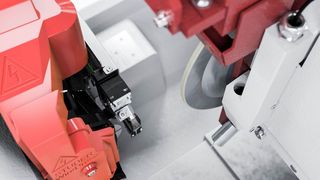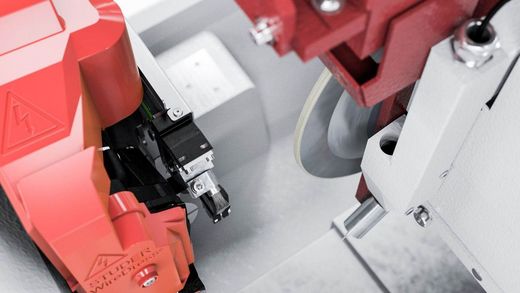Dress Your Best (Grinding Wheels) for High-Performance Alloys
From airplane engines to power plant turbines, the infrastructure of our society is built around materials that must withstand the toughest environments in the world. To improve performance and energy production, these high-performance alloys can hold up to incredible temperatures, corrosive chemicals or powerful physical stressors, but this, in turn, makes manufacturing significantly more difficult. As a result, when it comes to grinding, manufacturers need more than the typical aluminum oxide wheel – they need equally high-performance abrasives, effective processes and advanced wheel dressing technology.
Also known as “superalloys,” high-performance alloys include a wide variety of materials, each with its own specific set of use cases. Nickel and/or chromium-based alloys such as Inconel, for example, are prized for their ability to maintain their shape and strength at the extreme temperatures found in energy production or aerospace applications. Other alloys, particularly those designed for the highest level of strength, may involve ceramics or carbide. Even more mundane materials may be transformed for “super” applications with the addition of such technologies as high-velocity oxygen fuel (HVOF) coatings.
Naturally, the applications for which these materials are designed tend to require excellent surface finishes as well, and grinding technology has advanced to meet the needs of manufacturers working with high-performance alloys. Cubic boron nitride (CBN) or diamond wheels are the norm when performing grinding operations on these materials, as is an oil-based coolant system – which requires a fire-suppression system, filtration systems and more – and both must be overseen by grinding specialists with experience dealing with high-performance alloys.
Software solutions such as StuderTechnology can generally provide an excellent starting point for high-performance alloy part programs, but for these difficult applications, fine-tuning is frequently necessary. The variations in alloy composition mean that speeds, feeds and metal removal rates must be optimized on a case-by-case basis. Furthermore, cobalt, nickel and other materials common in high-performance alloys can be especially sticky, which means that continuous rotary dressing must be incorporated into processes for the greatest efficiency.
For this, manufacturers turn to STUDER WireDress® and its ability to handle the toughest metal-sintered wheels. Profiling and sharpening occur automatically through a process akin to wire electrical discharge machining (EDM), which requires no mechanical contact between the wire, the grain and the bond, thus protecting the abrasive grain. And thanks to the advanced design of the WireDress® system, manufacturers can obtain the highest degree of productivity, precision and ease of use.
WireDress® allows for the use of metal-bonded wheels, a factor that accounts for more than 30% greater power than ceramic bonding on its own. These wheels last longer, manage heat better and cut cleaner, faster and more aggressively than vitrified or resin-bond wheels. The WireDress® erosion process accentuates such performance through sharper, more precise and effective wheel dressings, all performed inside the grinding machine itself and while grinding wheels rotate at actual working speeds.
For high-performance alloy grinding efficiency, dressing at full wheel speed eliminates problems and inaccuracies from wheel growth. Full-speed dressing, along with the pinpoint accuracy of the erosion process, makes it possible for the STUDER WireDress® to generate exacting geometries. Users simply enter a wheel’s profile information into the grinding machine’s CNC using existing standard UNITED GRINDING StuderDress software to automatically calculate dressing programs for any particular wheel profile.
For more information on how STUDER WireDress can improve your high-performance alloy grinding applications, see our page on the technology on www.grinding.com.









